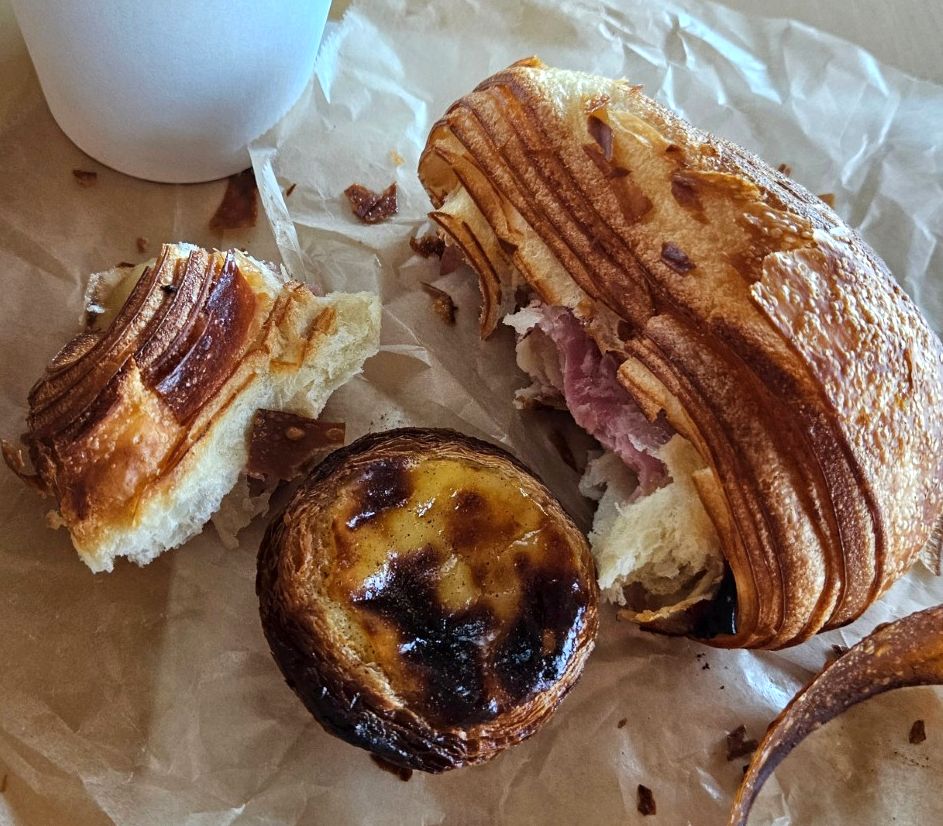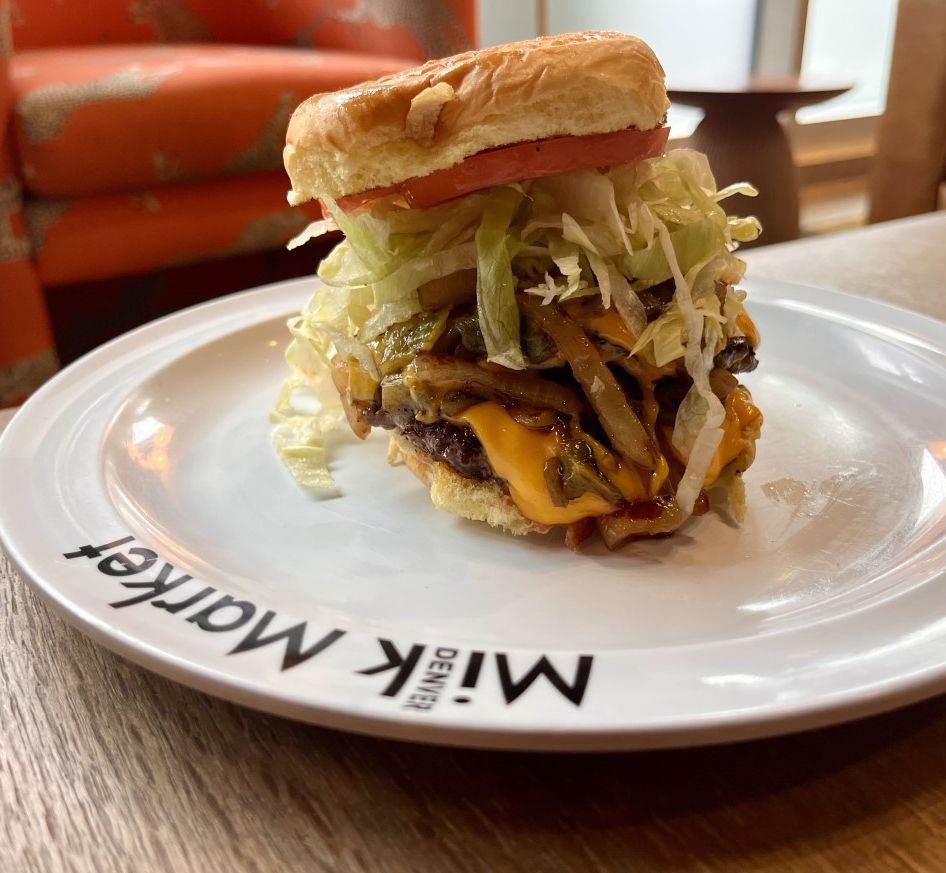Denver, Colorado is the main entry point for people heading to the celebrated ski resorts in Breckenridge, Aspen and Vail. But there’s so much to do in Denver that it’s worth adding a few days to your itinerary to enjoy the Mile High City’s many charms and lively food scene.
Three hundred days of sunshine, a busy cultural calendar, diverse neighbourhoods and stunning natural scenery all come together to make Denver a great place to live. Add to that a dynamic, chef-driven culinary scene and an energetic brewing industry. What’s not to love? Just ten miles out of town is the gateway to the Denver Mountain network of hiking and biking trails and the legendary Red Rocks Amphitheatre, an acoustically perfect venue where almost every musician you can think of has played.

A Place to Stay
The Source Hotel is a design-forward boutique lodging in the RiNo (River North) Arts District with rooms that offer a magical view of the Rocky Mountains glowing gold at sunrise. Woods, the rooftop restaurant and bar come alive in the evening, with an open terrace and glittering city nightscape forming a backdrop for well crafted cocktails and tasty bites. Try the signature Woods Burger with Candied Bacon and Chipotle Aioli.
Retail Therapy
Cherry Creek is a tony historic neighbourhood where tree-shaded streets are lined with opulent heritage homes dating from Denver’s Gilded Age at the end of the nineteenth century. Cherry Creek North is a up-market retail precinct with more than 300 places to shop, dine or get pampered. When you’ve worked up an appetite exploring art galleries, fashion boutiques, spas and fitness studios, Local Jones is a warm and inviting spot to wind down or fuel up with a contemporary, all-day menu with a local focus that segues smoothly from morning coffee to evening wine. Great plate: Pork Green Chile Breakfast Burrito made with Hatch green chiles grown in the south of the state.

Vintage Vibes
A tour of the sumptuously restored Molly Brown House tells the extraordinary story of “Unsinkable Molly Brown” the Denver socialite who not only survived the sinking of the Titanic but also saved the lives of many other women by manning the oars of the lifeboat that carried them through an icy sea to rescue by RMS Carpathia. The house museum collection contains thousands of items from fashion and jewellery to furnishings and objet’s d’art that paint a vivid picture of life in Denver at the turn of the nineteenth century.

Buckhorn Exchange, Denver’s oldest restaurant and its first holder of a liquor license, is another quirky relic of Colorado history, founded in 1893 by a member of Buffalo Bill Cody’s crew. It’s a temple to wild caught game and the spirit of the Old West, with walls adorned with hunting trophies, a 125-piece gun collection, and a menu featuring alligator, rattlesnake, elk, buffalo and the famous local delicacy known as Prairie Oysters. The Exchange has hosted four Presidents (Roosevelt, Eisenhower, Carter and Reagan) and numerous celebrities, from Bob Hope to Princess Anne, and is a unique souvenir of Denver’s ranching past.

The Oxford Hotel in LoDo (Lower Downtown) was built in 1891 during the heydays of Colorado’s mining boom. Its still functioning elevators were the first “vertical railways” to appear in the West. From her gilded cage gloriously yellow bird Mrs Sherman (a nod to the canary in the coalmine) watches over the comings and goings in the lobby while doorman Stewart Patton, the unofficial “Mayor of Denver” greets guest with polished patter and a mile-wide smile. A drink in the fabulous Cruise Room, Denver’s longest running bar, is a must. Opened in 1933, the day after Prohibition was repealed, it is an Art Deco gem inspired by the sleek lines of the cruise ship Queen Mary. The all-female bar crew delivers elegantly crafted cocktails, including what locals claim is the city’s best martini.

Cultural Treasures
For a visitor short on time, Denver’s Golden Triangle Museum District is ideal, with a handful of major museums and art galleries clustered within walking distance of each other. The History Colorado Center museum is a great way to get an overview of the city’s progress from Native American territory to frontier town and modern metropolis, with four floors of thought-provoking exhibits. Also in the district are The Denver Art Museum, the Kirkland Institute of Fine & Decorative Art, The Clyfford Still Museum other cultural institutions.
For a moment of peaceful respite from the buzz of the city, the Denver Botanic Gardens is a 23-acre oasis of serene and beautiful spaces with themed plantings, sculptures and water features. Just outside of town, the stunning Red Rocks Amphitheatre is a sight not to be missed. The dramatic open-air venue has hosted everyone from The Beatles to U2 and continues to attract the biggest names in the music industry. Its worth the half-hour drive from downtown Denver just to marvel at the breathtaking rock formations.

Locavore Market Halls
Denver has a number of food halls and culinary markets, where a variety of food purveyors are gathered together under one roof. It’s a great way to explore the city’s food scene when you don’t have a lot of time.
The Source Market Hall is housed inside a cluster of brick buildings built in the 1870s for the Colorado Iron Works. The former industrial space is now a centre for culinary artisans, including Reunion Bread, a tiny bakeshop where master baker Ismael De Sousa crafts naturally leavened sourdough loaves and magically flaky pastries. Coffee is freshly made and locals know to get there early as baked goods often sell out by mid-morning. Highly recommended are the Pasteis de Nata and South America-inspired Guava Danishes.

Dairy Block is a vibrant micro-district in LoDo that was once home to Windsor Dairy (1916). Restaurants and bars in The Alley come alive at night and during the day Denver Milk Market, an all-local take-away and dine-in food hall, buzzes with activity. There are eleven different dining concepts from pizza and pasta to poke bowls and salads. Seafood lovers should not miss Fish Tacos and the overstuffed Lobster Roll at Albina by the Sea.

Denver Central Market in RiNo is the place to go if you want a snapshot of the local artisanal food scene. Vendors in this refurbished heritage building offer custom butchery, fresh seafood, wood-fired pizza, salads, smoothies, gourmet ingredients and more. A real find is Temper Chocolate, with exceptionally fine handcrafted chocolates with fillings like blood orange and chai; Oaxacan mole negro and Hatch chile ganache, or caramel and black lava sea salt.

Anchoring the LoDo urban renewal district is the historic Union Station. First established in 1881 and rebuilt in 1914, it has been restored to its Beaux-Arts splendour and returned to its original function as Denver’s main transport hub. The addition of shops, bars and restaurants make it a popular destination among locals and visitors. Don’t miss the The Michelin-recognized Mercantile restaurant and the independently owned Tattered Cover Book Store that’s been serving Denver bibliophiles since 1971.
Beer Town
Denver is one of the best beer cities in the world. In fact, Colorado’s state senator founded Denver’s first brewpub — Wynkoop Brewing Company in LoDo. There’s one spot in RiNo district where there are more than 20 breweries within one square mile. Local beer maven Steve Schneiter’s RiNo Beer and Graffiti Tour offers the opportunity to sample several of them, along with the vibrant graffiti and murals that add to the edgy/hip vibe the former industrial district is known for. One of the best sips to be enjoyed is the Slow Pour Pils from Bierstadt Lagerhaus, a traditional craft pilsener with a seven-minute pull from the tap that results in a towering head and ultra crisp finish.

Global Dining
Denver’s culinary world is expanding, with creative chefs bringing cosmopolitan influences to restaurant menus and taking traditional Mid-Western fare in new directions. There’s a trend toward diversity lighting up the Denver dining scene.
Chefs Spencer White and Alex Figura moved from fine dining to a fast casual model that gained Dio Mio, a cosy spot in RiNo a Michelin nod. Place your order at the counter and then relax as friendly wait staff take care of the rest. Fresh pasta is the big draw here, plus creative seasonal share plates. Do not miss: Chewy, housemade focaccia with black butter, or Cacio e Pepe given a delicious twist with pink peppercorns.
NYC transplants Kenneth Wan and Doris Yuen earned a Michelin Bib Gourmand designation for their Denver restaurant MAKfam in 2024. They started out with a simple pop-up in Queens, NY, offering only one item, Hong Kong Milk Toast, which earned them a devoted following. Next came a stall in a Denver food hall and then a full-service restaurant. The decor is cool (the TV loops anime) and the menu is inspired by Chinatown favourites given a modern makeover. Don’t miss the Mouth-Numbing Mala Chicken Wings or the buttery Scallion Buns with seasoned salt.

LoHi (Lower Highland) is a hip neighbourhood in North Denver with craft breweries, cocktail bars, coffee shops and restaurants but it wasn’t always the safest place to be. During the bootlegging era, it was home to the notorious Smaldone crime family, who were in the habit of blowing each other up. Now blowing up in a more positive way is Señor Bear, a popular contemporary bar and restaurant with a pan-Latin menu that delivers creative cocktails and small plates big on flavour. Highlights include Shrimp Ceviche (with avocado, beer and tomato water) and Pork Carnitas – tacos filled with crispy pork and a Michoacán Mole.

Restaurant Safta in The Source Hotel is the only place outside New Orleans where you can taste the wizardry of acclaimed Israeli-American chef Alon Shaya. His menus pay homage to the culinary heritage of Israel, while staying very much on trend with technique and a local focus on ingredient provenance. Happily, there are dine-in and take-out menus so even if your time is limited, you can sample some Shaya magic. Order the signature Tahini with Aleppo Pepper and EVOO, and $2 is donated to World Central Kitchen.
The Denver Omelet – Not from Here

Culinary historians think that the Denver Omelet filled with bell pepper, onions, ham and cheese was originally a sandwich, created by 19th-century cattle drivers in the American West. Another theory is that it was created by Chinese railroad cooks as a riff on egg foo yong. Either way, the majority of historians agree that the breadless version, also known as the Western Omelet, was named for Denver City, Utah.


